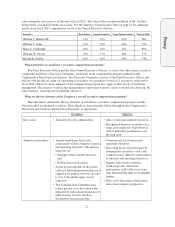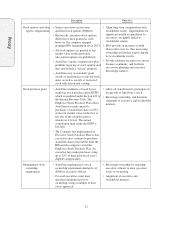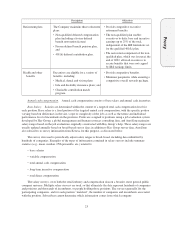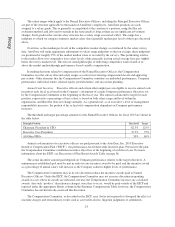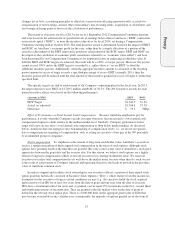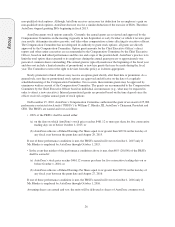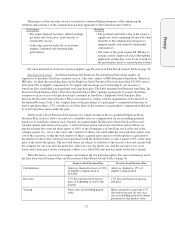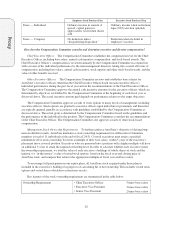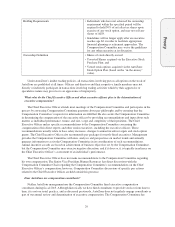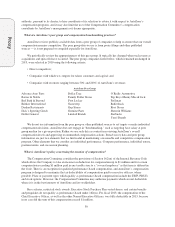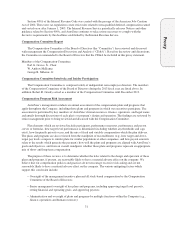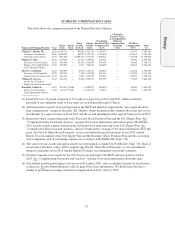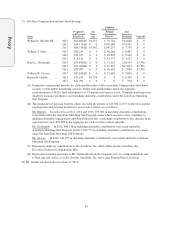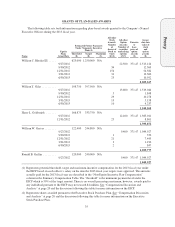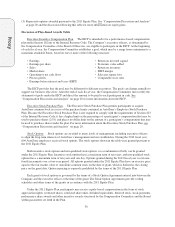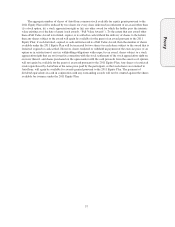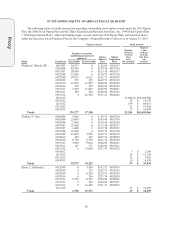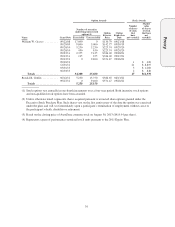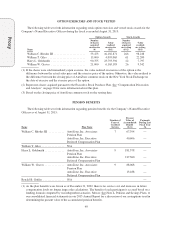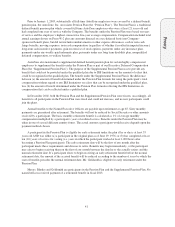AutoZone 2013 Annual Report Download - page 41
Download and view the complete annual report
Please find page 41 of the 2013 AutoZone annual report below. You can navigate through the pages in the report by either clicking on the pages listed below, or by using the keyword search tool below to find specific information within the annual report.
Proxy
Section 409A of the Internal Revenue Code was created with the passage of the American Jobs Creation
Act of 2004. These new tax regulations create strict rules related to non-qualified deferred compensation earned
and vested on or after January 1, 2005. The Internal Revenue Service periodically releases Notices and other
guidance related to Section 409A, and AutoZone continues to take actions necessary to comply with the
Section’s requirements by the deadlines established by the Internal Revenue Service.
Compensation Committee Report
The Compensation Committee of the Board of Directors (the “Committee”) has reviewed and discussed
with management the Compensation Discussion and Analysis (“CD&A”). Based on the review and discussions,
the Committee recommended to the Board of Directors that the CD&A be included in this proxy statement.
Members of the Compensation Committee:
Earl G. Graves, Jr., Chair
W. Andrew McKenna
George R. Mrkonic, Jr.
Compensation Committee Interlocks and Insider Participation
The Compensation Committee is composed solely of independent, non-employee directors. The members
of the Compensation Committee of the Board of Directors during the 2013 fiscal year are listed above. In
addition, Robert R. Grusky served as a member of the Compensation Committee until December 2012.
Compensation Program Risk Assessment
AutoZone’s management conducts an annual assessment of the compensation plans and programs that
apply throughout the Company, including those plans and programs in which our executives participate. The
assessment is performed by key members of AutoZone’s human resources, finance, operations, and legal teams,
and entails thorough discussions of each plan’s or program’s design and operation. The findings are reviewed by
senior management prior to being reviewed and discussed with the Compensation Committee.
Plan elements which are reviewed include participants, performance measures, performance and payout
curves or formulas, how target level performance is determined (including whether any thresholds and caps
exist), how frequently payouts occur, and the mix of fixed and variable compensation which the plan delivers.
The plans and programs are also reviewed from the standpoint of reasonableness (e.g., how target and above-
target pay levels compare to similar plans for similar populations at other companies, and how payout amounts
relate to the results which generate the payment), how well the plans and programs are aligned with AutoZone’s
goals and objectives, and from an overall standpoint, whether these plans and programs represent an appropriate
mix of short- and long-term compensation.
The purpose of these reviews is to determine whether the risks related to the design and operation of these
plans and programs, if present, are reasonably likely to have a material adverse effect on the company. We
believe that our compensation policies and practices do not encourage excessive risk-taking and are not
reasonably likely to have a material adverse effect on the company. The various mitigating factors which
support this conclusion include:
• Oversight of the management incentive plan and all stock-based compensation by the Compensation
Committee of the Board of Directors;
• Senior management oversight of key plans and programs, including approving target level payouts,
setting financial and operating goals, and approving payouts;
• Administration and oversight of plans and programs by multiple functions within the Company (e.g.,
finance, operations and human resources);
31


